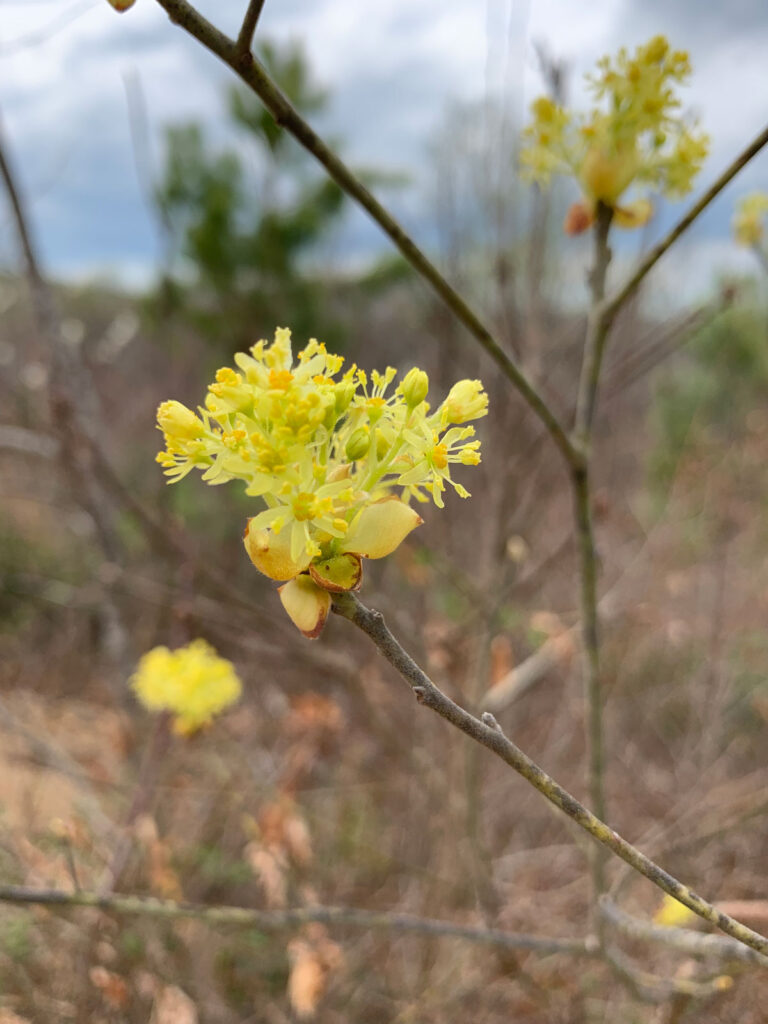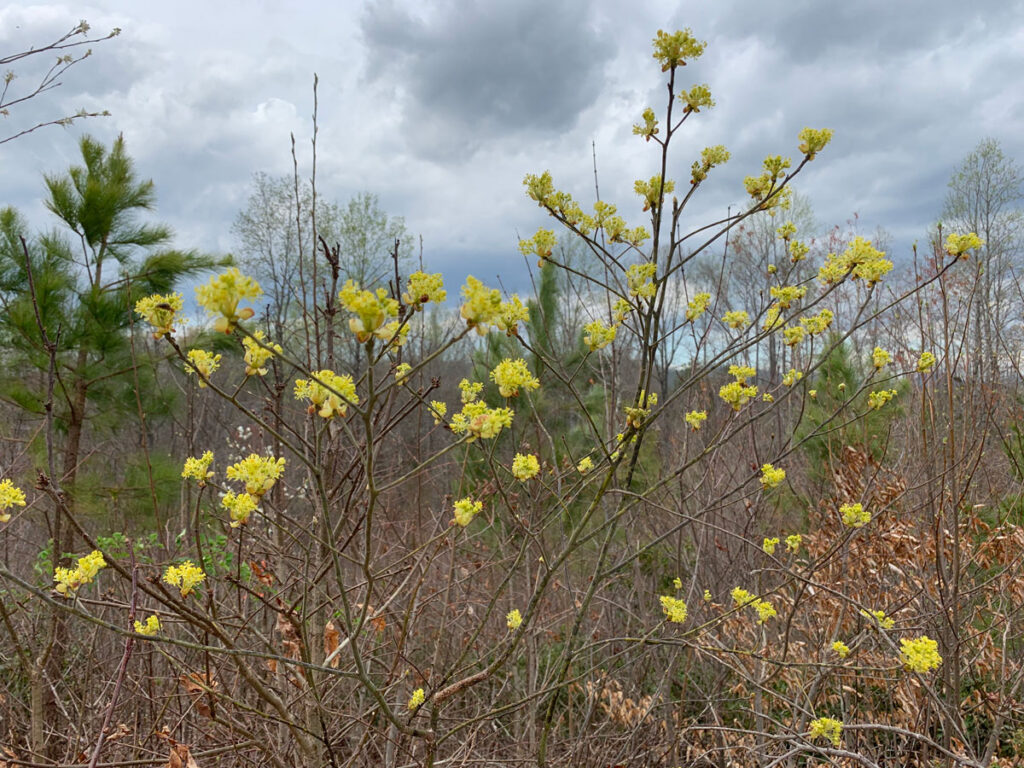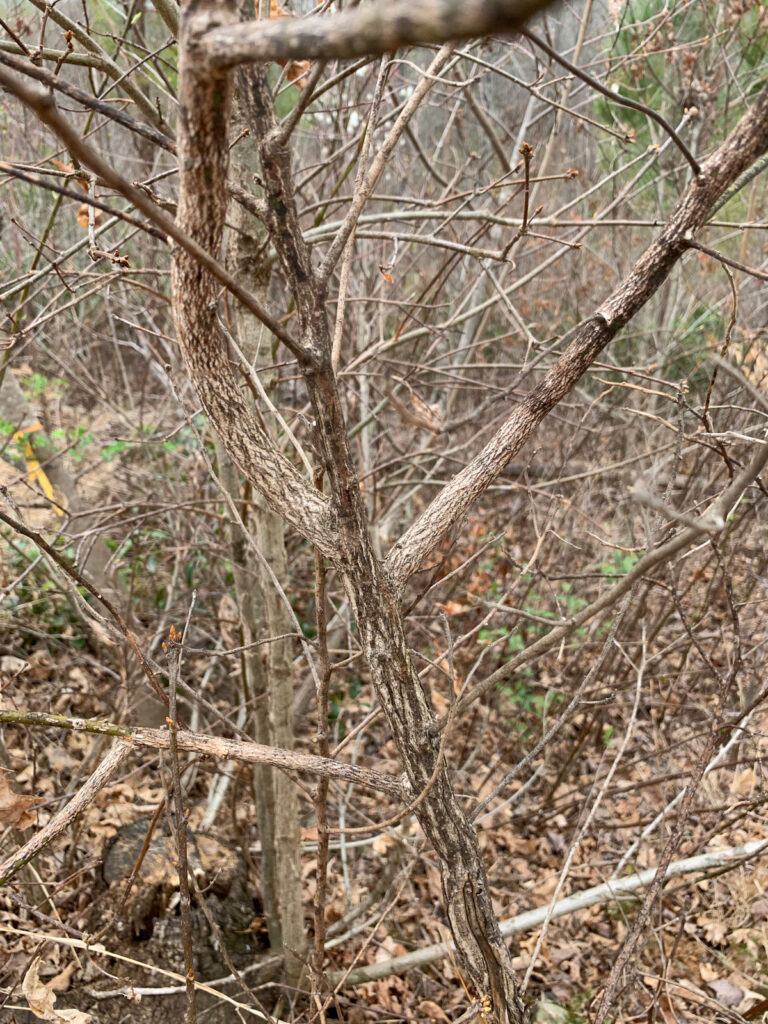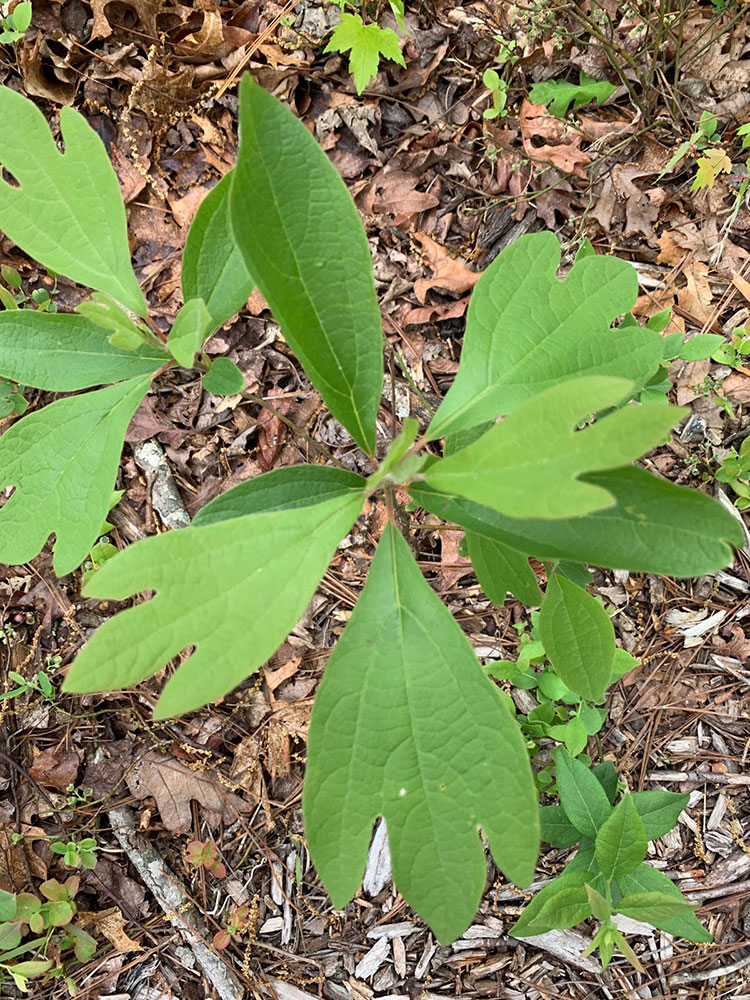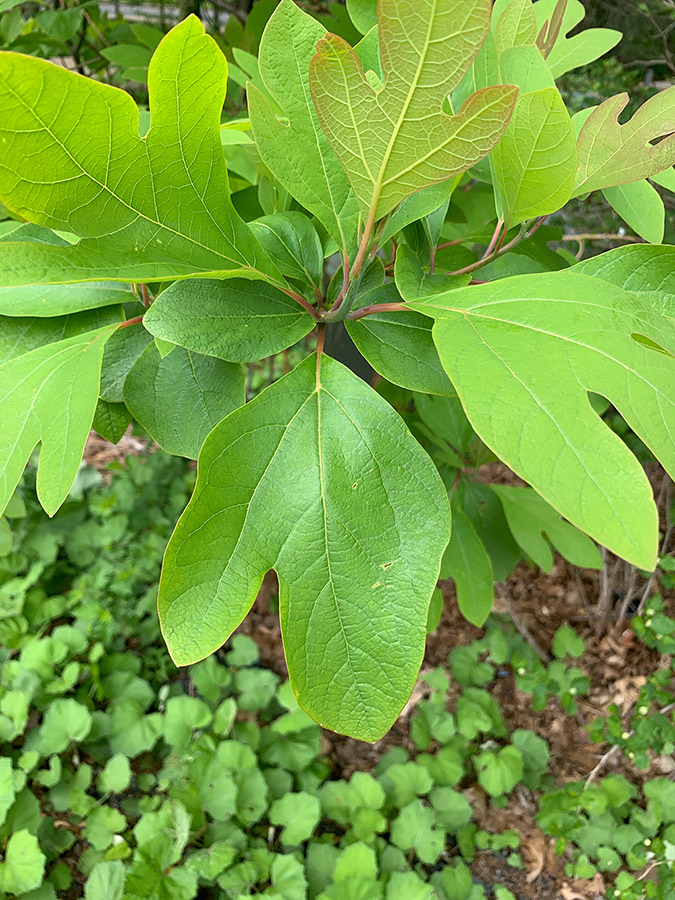I remember my Grandpa showing me a tree in West Virginia, breaking off a small twig and peeling off the bark, and instructing me to chew it. Root beer! He taught me that the plant had been used to flavor the drink. Although I grew up in a family that avidly gardened specifically vegetables and some berries, that was probably the first time I was introduced to the concept of a “wild” plant being used to make day to day food and drink. It kind of blew my little 7 year old mind.
Turns out the compound that makes that distinctive flavor, called “safrole” has now been identified as a carcinogen and the FDA as of 2005 prohibits its use in food. That won’t stop me from occasionally chewing on a twig now and then, however!
Size: 30-60' tall Family: Lauraceae (Laurel Family) Habitat: Full sun, particularly on rocks and outcrops. Identification: A tall many branched tree, of which all parts are fragrant (akin to a mild root beer). Blooms are yellow. Leaves are distinct in that they have three different shapes: a simple unlobed leaf, one that is asymmetrical and looks like a mitten, and one that is tree-lobed and looks like a dinosaur footprint. Blooms April-May Uses: The roots and bark have been long used to flavor tonics and to flavor root beer. Native Americans used the plant medicinally.
